Fading Scars of World War II
Dresden and Berlin, August 31-September 5
We drove northeast from Karlovy Vary to Dresden, which we had last visited in 1994, when the legacy of the former German Democratic Republic was all too evident. Much had changed in the intervening 12 years, most notably the reconstruction of the Frauenkirche, the city’s principal Protestant church, which the Communists had left as a pile of rubble to remind the populace of the horrors of war—especially those horrors perpetrated by the U.S. and British air forces. But reconstruction of this glorious Baroque edifice conveys a message of reconciliation and hope, and at a noontime service we heard the pastor lead the capacity crowd in a prayer borrowed from England’s Coventry Cathedral, with which the Frauenkirche has a special relationship.
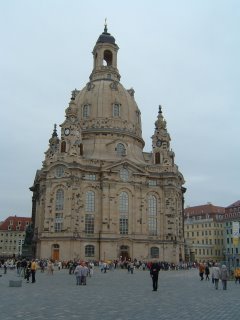
Frauenkirche
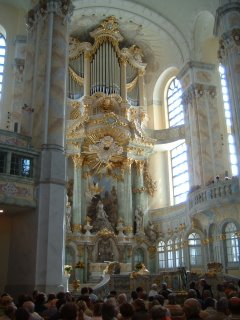
Frauenkirche interior
Much of downtown Dresden has been pedestrianized so we were able to wander easily through the area. Our favorite building was the Zwinger, which was built in the 18th Century by Augustus the Strong using Italian architects and sculptors. A lover of all Italian art, August also brought the painter Canaletto to Saxony and Poland (which he also ruled) so we found local scenes in both Dresden and Cracow by this master, whom we had previously associated only with Venice.
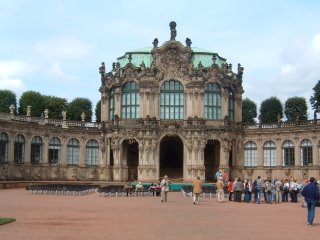
Zwinger Wallpavillon
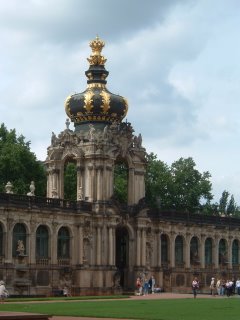
Zwinger Kronentor
Music is another art highly valued in Dresden, and we resolved to pay homage to this muse as well. We could have bought tickets to “Siegfried” at the Semper Opera House, but we regretfully concluded that five hours might be too much for our travel-weary “sitzfleisch.” We decided, therefore, on an all-Brahms program at the Dresdener Philharmonie, Rafael Fruehbeck de Burgos conducting with violinist Daniel Hope as soloist. A wise choice in every respect.
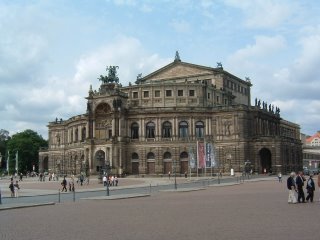
Semper Opera House
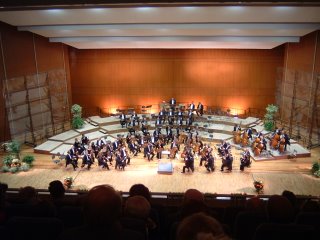
Dresden Philharmonic
It was an easy drive from Dresden to Berlin, where we had booked ourselves into a small hotel with free protected parking (one of our key desiderata) within walking distance of the Kurfuerstendamm. We attended an excellent organ concert on the Ku’damm at the Kaiser-Wilhelm-Gedaechtnis-Kirche but spent most of our time in other sections of Berlin using a three-day pass for the city’s public transportation system.
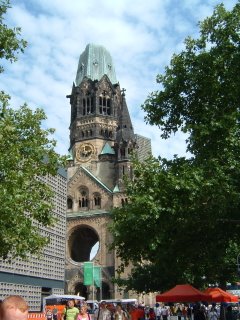
Kaiser-Wilhelm-Gedaechtnis-Kirche
Like Dresden, Berlin had changed considerably since our 1994 visit. The change was most evident in the area surrounding the Brandenburg Gate, where the renovated Reichstag was definitely the main attraction with an hour’s wait required to visit the dome for a view of the city. From there we could see the new U.S. Embassy, scheduled for completion in 2007. Ranging further into what had been East Berlin, we found that Prenzlauer Berg, previously a counterculture stronghold, was taking on a distressingly bourgeois coloration. However, the only disaster area was Alexanderplatz, which has still not recovered from Allied bombs, Soviet artillery and Communist gigantomania although redevelopment plans are reportedly underway.
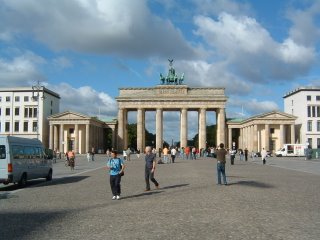
Brandenburg Gate

On the Reichstag roof

New U.S. Embassy
Berlin’s art museums are always a treat, and we greatly enjoyed an afternoon in the Gemaeldegalerie with its collection of old masters, including fascinating examples of medieval German religious art that we had not previously seen. However, our favorite remains the Pergamon, where we revisited the eponymous altar and the reconstructions from Nebuchanezzar’s Babylon palace with its rows upon rows of tile lions. A new feature, at least to us, was the wing devoted to Islamic art, which presented beautiful works logically interrelated and carefully explained.
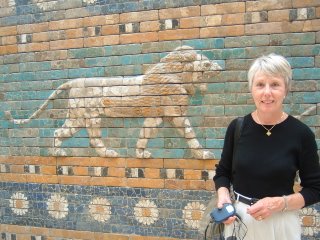
With Babylon lion, Pergamon Museum
Recent history is inescapable in Berlin, and the city is doing an admirable job of dealing with it, with major monuments and many plaques recalling individual victims. The most evocative monument is the field of steles erected near the new U.S. Embassy as a memorial to the Jews murdered during the Third Reich. Also sobering is the Neue Wache, the small classical temple on Unter den Linden that has evolved from a GDR tribute to victims of fascism and militarism (with two soldiers standing guard in front!) into a memorial to all victims of war and dictatorship (with the Kaethe Kollwitz sculpture “Mother with Her Dead Son” at its center). A monument honoring the July 14 plotters stands in the courtyard of the Bendlerblock, the offices where Wehrmacht officers developed the plot against Hitler and where Stauffenberg and two of his colleagues were shot after its failure. We spent a morning in the museum upstairs that describes in considerable detail all German anti-Nazi resistance efforts while emphasizing that the resisters represented a tragically small percentage of the German population.
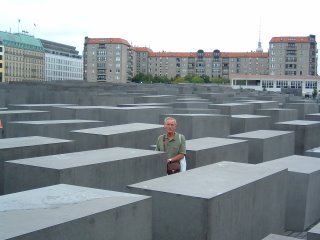
Jewish Memorial
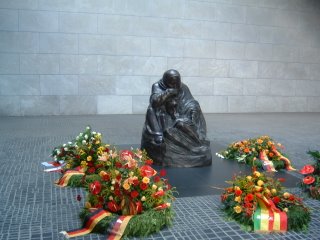
Kaethe Kollwitz sculpture, Neue Wache
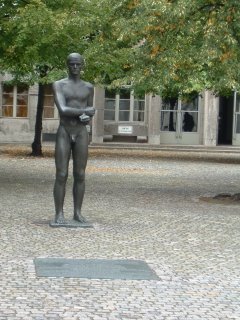
July 14 Memorial at Bendlerblock
